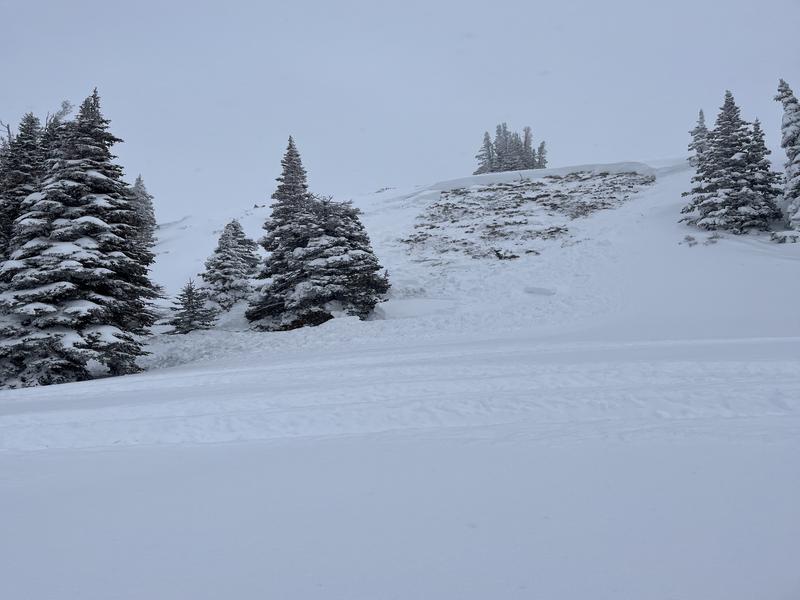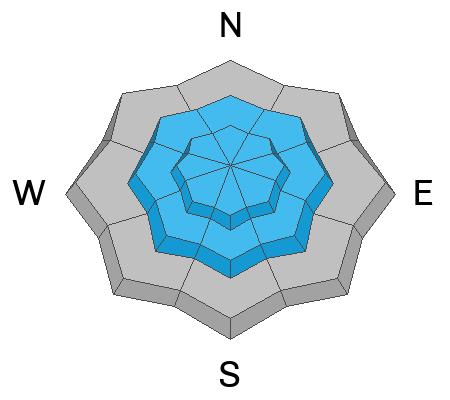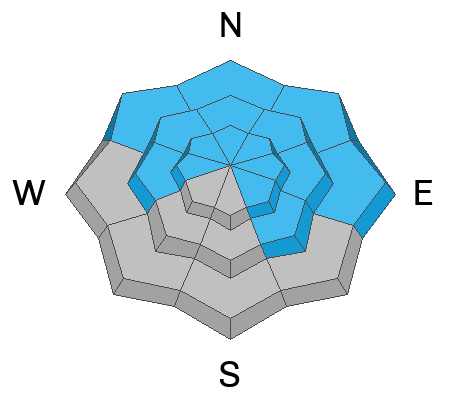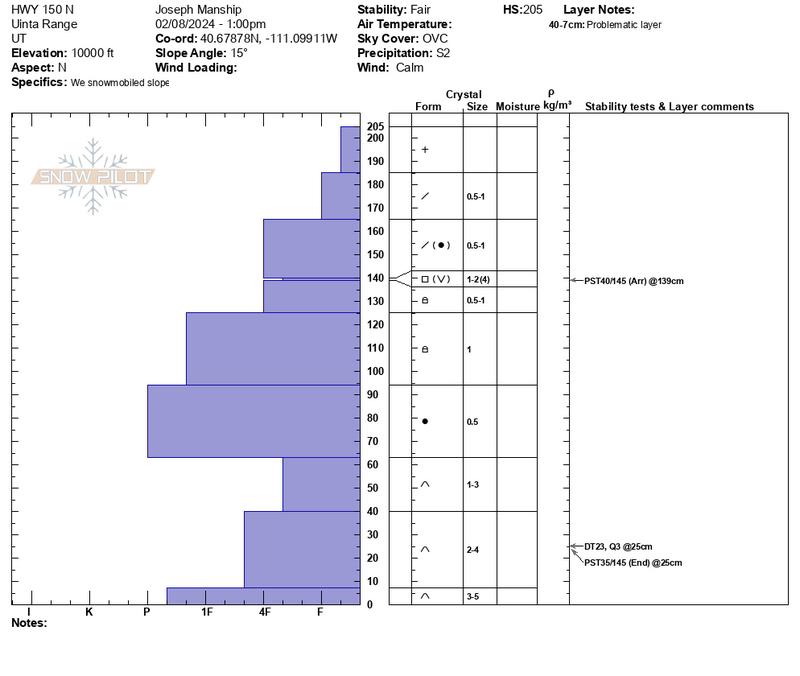Forecast for the Uintas Area Mountains

Issued by Craig Gordon on
Friday morning, February 9, 2024
Friday morning, February 9, 2024
There's plenty of winter left-
Let's keep it tight, be patient, and step out cautiously the next few days, allowing the snowpack to adjust to the big midweek storm
HIGH avalanche danger holds steady today near and above treeline. Human triggered avalanches are VERY LIKELY on steep, rocky, leeward slopes, particularly those facing the north half of the compass, and especially those in the wind zone. Any avalanche triggered has the distinct potential to break deeper and wider than you might expect, producing a very dangerous slide.
Recent winds and heavy storm snow overload steep, mid elevation slopes, where you'll find CONSIDERABLE avalanche danger. Steep, shady, terrain is suspect and human triggered avalanches are LIKELY on wind drifted slopes.
MODERATE avalanche danger is found on steep, lower elevation slopes, particularly those facing the north half of the compass. Not widespread and trending in the right direction, triggering a rogue, wind drifted pocket is still POSSIBLE.
Here's your exit strategy-
Don't hide under the beds, but don't roll the dice... go carve deep trenches in big open fields or go meadow skipping in low elevation, wind sheltered slopes with no steep terrain above or adjacent to where you're riding.
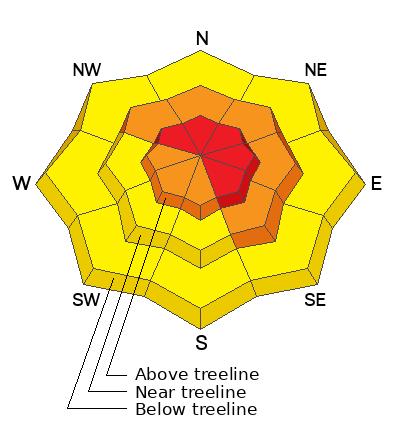
Low
Moderate
Considerable
High
Extreme
Learn how to read the forecast here


